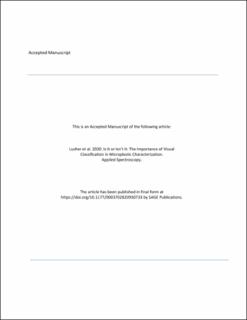| dc.description.abstract | Microplastics are a diverse category of pollutants, comprising a range of constituent polymers modified by varying quantities of additives and sorbed pollutants, and exhibiting a range of morphologies, sizes, and visual properties. This diversity, as well as their microscopic size range, presents numerous barriers to identification and enumeration. These issues are addressed with the application of physical and chemical analytical procedures; however, these present new problems associated with researcher training, facility availability and cost, especially for large-scale monitoring programs. Perhaps more importantly, the classifications and nomenclature used by individual researchers to describe microplastics remains inconsistent. In addition to reducing comparability between studies, this limits the conclusions that may be drawn regarding plastic sources and potential environmental impacts. Additionally, where particle morphology data is presented, it is often separate from information on polymer distribution. In establishing a more rigorous and standardized visual identification procedure, it is possible to improve the targeting of complex analytical techniques and improve the standards by which we monitor and record microplastic contamination. Here we present a simple and effective protocol to enable consistent visual processing of samples with an aim to contribute to a higher degree of standardization within the microplastic scientific community. This protocol will not eliminate the need for non-subjective methods to verify plastic objects, but it will standardize the criteria by which suspected plastic items are identified and reduce the costs associated with further analysis. | en_US |
